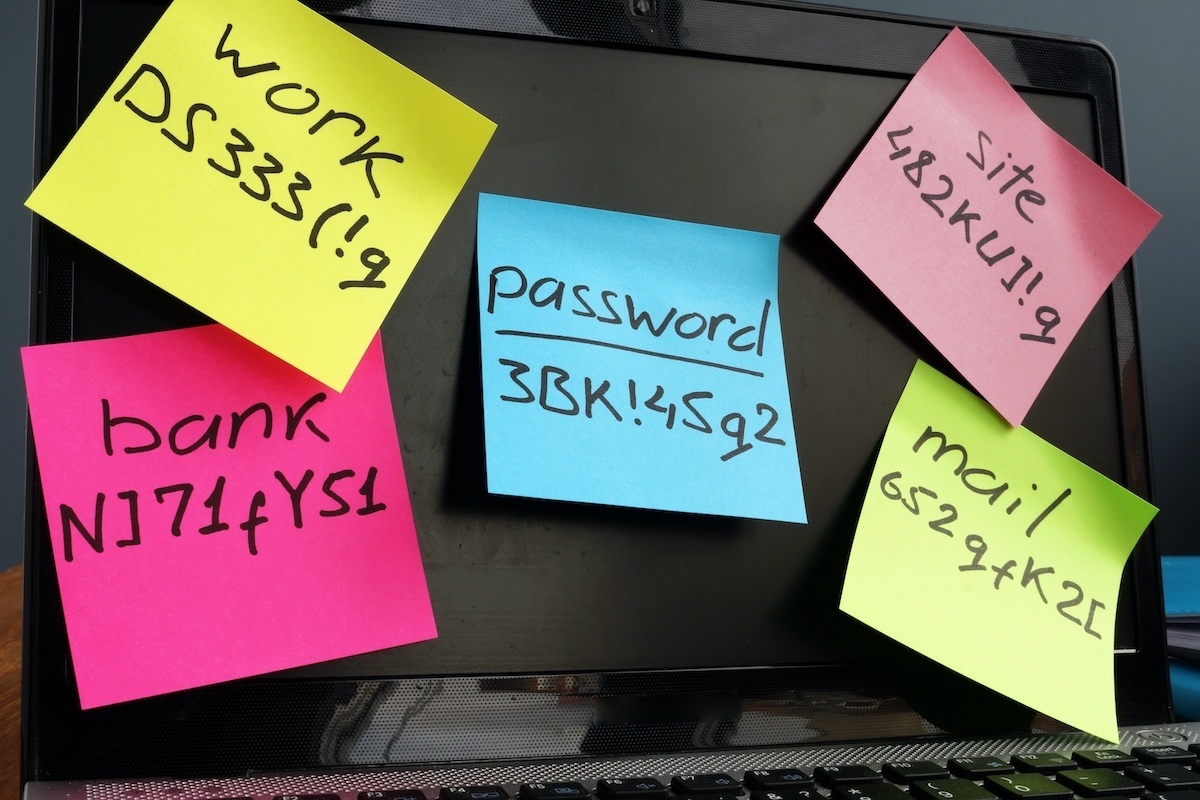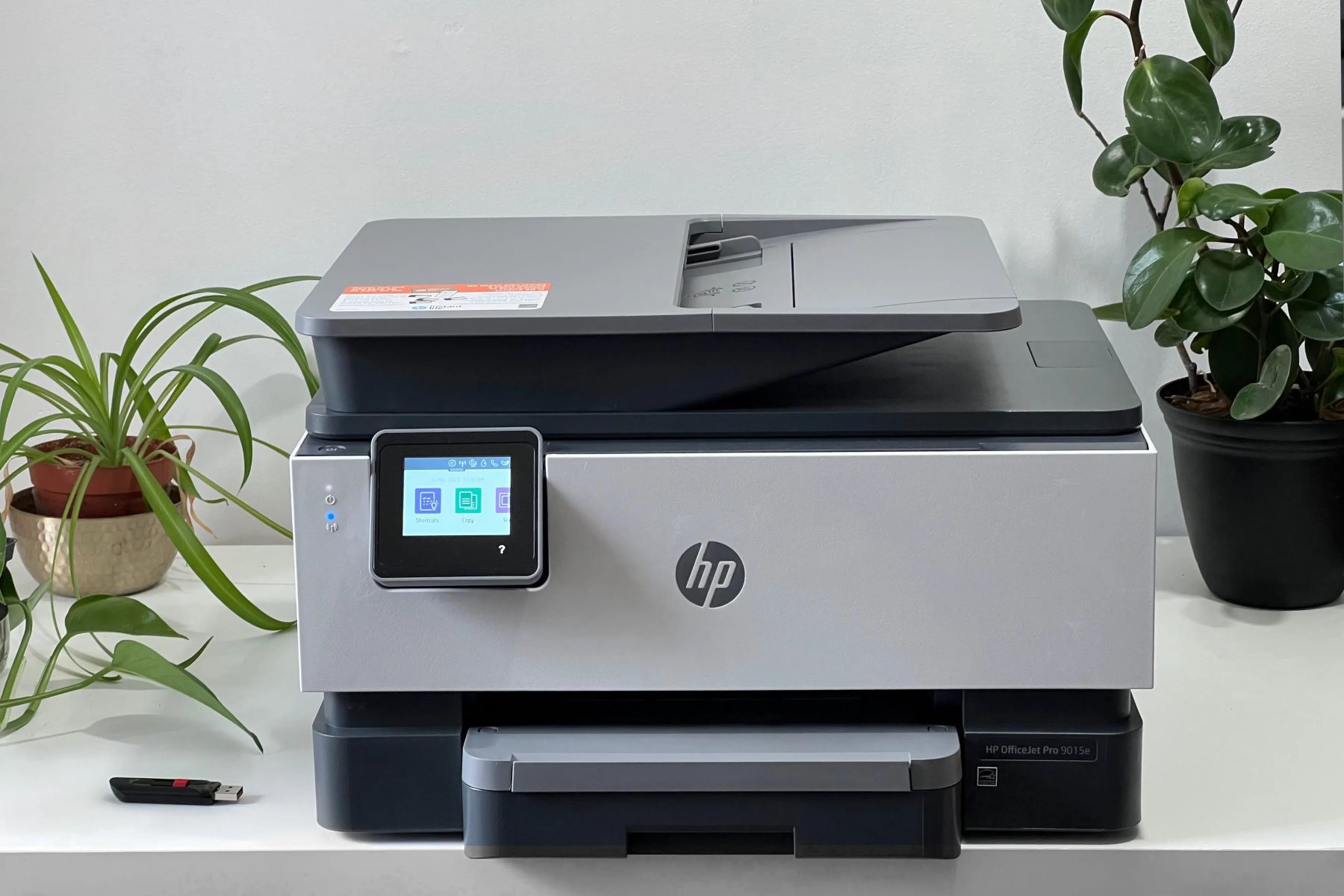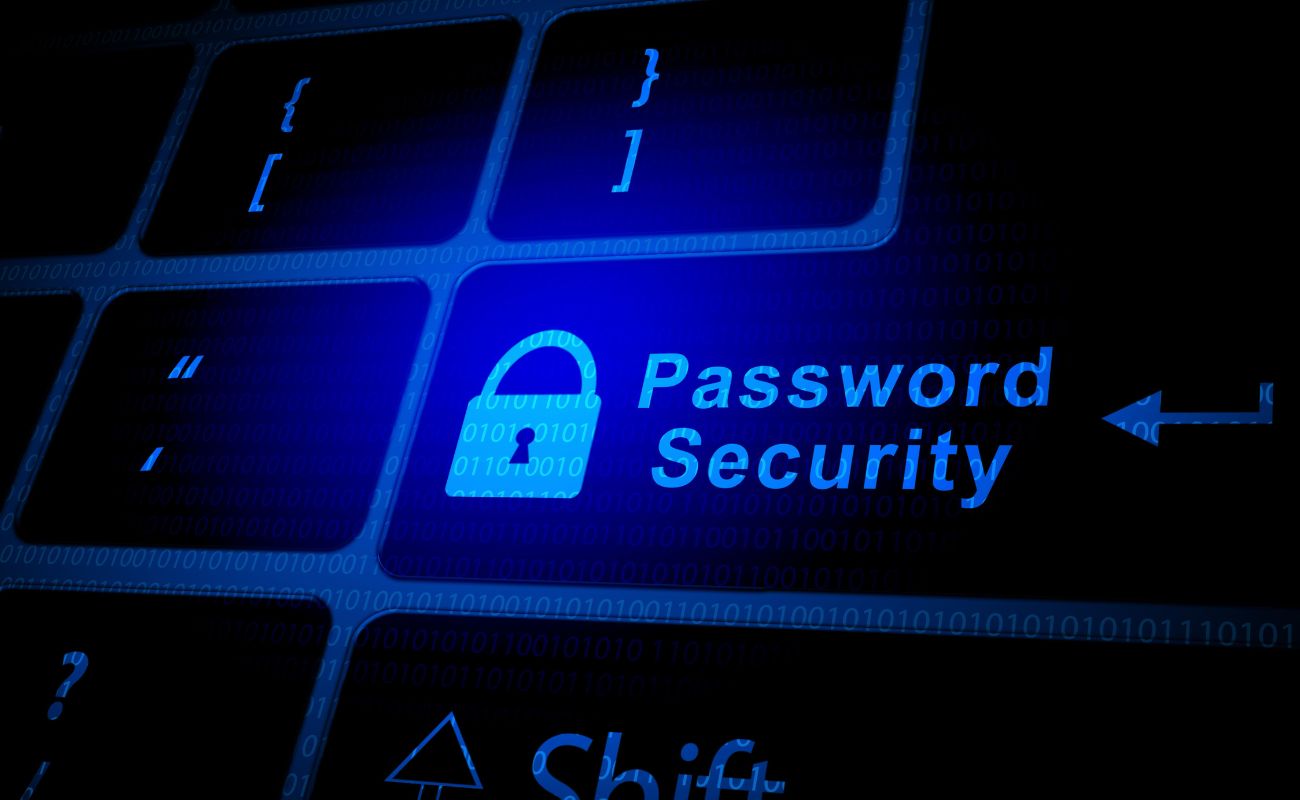

Articles
How To Store Your Passwords
Modified: December 7, 2023
Learn the best practices for storing your passwords securely and keep your online accounts safe with these informative articles.
(Many of the links in this article redirect to a specific reviewed product. Your purchase of these products through affiliate links helps to generate commission for Storables.com, at no extra cost. Learn more)
Introduction
In today’s digital age, where passwords are an integral part of our online lives, finding a secure method for storing them is crucial. With numerous online accounts that require passwords – from social media platforms to banking websites – it can become overwhelming to keep track of all your login credentials. However, it is essential to prioritize password security to protect your personal information from unauthorized access.
In this article, we will explore the importance of secure password storage and discuss various methods that can be used to store passwords effectively. We will also provide best practices to ensure your passwords remain safe and secure.
As cyber threats continue to evolve, it becomes increasingly important to safeguard our online identities. Cybercriminals employ sophisticated techniques to gain unauthorized access to personal accounts, steal sensitive information, and potentially cause financial losses. Therefore, having a robust password storage strategy is vital for protecting ourselves in the digital realm.
Let’s dive deeper into the different methods for storing passwords securely and explore the best practices to follow.
Key Takeaways:
- Secure password storage is crucial to protect sensitive information, prevent identity theft, and maintain online privacy. Methods such as password managers, paper-based systems, memory techniques, and unique passwords offer diverse options for safeguarding digital identities.
- Best practices for password storage, including creating strong and unique passwords, using two-factor authentication, and regularly updating passwords, are essential for maintaining strong password security. By implementing these practices, individuals can significantly enhance their online protection and reduce the risk of unauthorized access.
Read more: How To Store Passwords On Your Computer
Importance of Secure Password Storage
Secure password storage is crucial for several reasons. First and foremost, it helps protect your sensitive information from falling into the wrong hands. With hackers constantly attempting to breach online accounts, having strong and unique passwords is essential to preventing unauthorized access to your personal data.
Another reason for prioritizing secure password storage is to prevent identity theft. Cybercriminals can use compromised passwords to impersonate you, gain access to your accounts, and potentially use your identity for illegal activities. By storing passwords securely, you minimize the risk of becoming a victim of identity theft.
Moreover, secure password storage helps to maintain the confidentiality of your online communications. Many online services, such as email providers and messaging apps, store personal information and confidential messages. If your password is weak or compromised, it becomes easier for attackers to compromise your privacy and gain unauthorized access to your communications.
Furthermore, a strong password storage strategy can significantly reduce the chances of password reuse. Reusing passwords across multiple accounts is a common but dangerous practice. If one account gets compromised, all other accounts using the same password become vulnerable. Storing passwords securely encourages the use of unique passwords for each account, mitigating the risk of widespread breaches.
Lastly, secure password storage provides peace of mind. Knowing that your passwords are well-protected allows you to navigate the online world with confidence. It eliminates the constant worry of falling victim to password-related attacks and allows you to focus on other important aspects of your online life.
By understanding the significance of secure password storage, individuals can take the necessary steps to protect their online identities and sensitive information. In the following sections, we will explore different methods for storing passwords securely and discuss best practices to ensure maximum protection.
Methods for Storing Passwords
When it comes to storing passwords securely, there are several methods to consider. Each method has its own advantages and considerations, so it’s important to choose one that aligns with your preferences and level of comfort with technology.
1. Password Managers
Password managers are convenient tools that allow you to store and manage all your passwords in one secure location. They typically require you to create a master password that grants access to your password vault. The password manager then generates and stores complex, unique passwords for each of your accounts, eliminating the need to remember them all.
Password managers offer several benefits, such as automatic form filling, password generation, and synchronization across multiple devices, making it easy to access your passwords whenever and wherever you need them. Some popular password manager options include LastPass, Dashlane, and 1Password.
2. Paper-Based Systems
For individuals who prefer a more tangible approach, paper-based password storage systems can be an option. This method involves writing down your passwords on a piece of paper and keeping it in a secure location, such as a locked drawer or a safe.
When using paper-based systems, it’s important to maintain the physical security of your passwords. Ensure that you keep the paper in a discreet place and avoid labeling it as “passwords” to prevent easy identification by unauthorized individuals. Regularly review and update your passwords, destroying the old paper securely.
Read more: How To Store Passwords Safely On Paper
3. Memory Techniques
For those who have excellent memory skills, relying on memory techniques to store passwords can be a viable option. This involves creating unique associations or patterns that help you remember your passwords without writing them down or using password management tools.
For example, you can create a memorable phrase or sentence that incorporates elements of your password. By using mnemonic techniques, you can associate certain words with specific characters in your password and easily recall it when needed. However, it’s important to note that this method can become challenging if you have numerous complex passwords to remember.
4. Using Unique Passwords for Different Accounts
Another method for storing passwords securely is to use unique passwords for each of your online accounts. This method reduces the risk of widespread breaches in the event that one account is compromised. Even if a hacker gains access to one account, they won’t be able to use the same password to access other accounts.
While this method requires you to remember multiple passwords, it is a simple and effective way to enhance your overall password security. To make it easier, you can use a base password combined with a unique identifier for each account, such as adding the first letter of the website or service to the end of your base password.
By considering these different methods for storing passwords, you can choose the one that best suits your needs and helps you maintain strong password security. Remember, the key is to find a method that you are comfortable with and consistently follow best practices for password protection.
Methods for Storing Passwords
1. Password Managers
Password managers are convenient tools that provide a secure and efficient way to store and manage all your passwords. These software applications encrypt and store your passwords in a password vault, which is protected by a master password – a single strong password that grants access to your stored passwords.
One of the primary advantages of using a password manager is that it eliminates the need to remember multiple complex passwords. Password managers generate strong, unique passwords for each of your accounts, ensuring that you won’t forget them. This allows you to strengthen your password security by using a combination of letters, numbers, and special characters without the hassle of memorization.
Additionally, password managers often come with features such as auto-fill, which automatically populates your login credentials when visiting websites or using apps. This not only saves time but also protects against phishing attacks by ensuring that you are logging in to legitimate websites.
Many password managers also offer cross-device synchronization, allowing you to access your password vault from different devices such as computers, smartphones, and tablets. This means you can easily manage and use your passwords without the need for manual synchronization or data transfer.
When choosing a password manager, consider factors such as security measures, user-friendliness, and compatibility with your devices. Popular password manager options include LastPass, Dashlane, and 1Password. It’s important to research and select a reputable password manager that aligns with your specific needs and preferences.
Nevertheless, it’s important to note that password managers themselves are not invincible to security threats. It is crucial to use a strong master password and enable additional security measures, such as two-factor authentication, to further protect your password vault.
Overall, password managers provide a convenient and secure solution for password storage and management. They remove the burden of remembering numerous passwords while allowing you to create strong, unique passwords for each of your accounts. By utilizing a password manager, you can ensure better password security and protect your online accounts from unauthorized access.
Methods for Storing Passwords
2. Paper-Based Systems
For individuals who prefer a more tactile and offline approach to password storage, paper-based systems can be a viable option. This method involves writing down your passwords on a physical piece of paper and keeping it in a secure location.
The advantage of paper-based systems is that they provide a tangible backup of your passwords that is not susceptible to digital attacks or technological failures. However, it’s important to note that this method requires strict physical security measures to ensure the confidentiality of your passwords.
When using a paper-based system, it’s crucial to keep your password list in a secure and discreet location. Consider storing it in a locked drawer, a safe, or an off-site location that only you have access to. Avoid leaving passwords in plain sight or labeling them as “passwords” to prevent easy identification by unauthorized individuals.
To add an extra layer of security, you can also consider encrypting your paper password list. This can be done by using a simple substitution cipher, where each character is replaced with another character following a specific pattern that only you know. This encryption technique ensures that even if someone finds your password list, they won’t be able to decipher the passwords without the decryption key.
Regularly reviewing and updating your passwords is essential when using a paper-based system. If you change your password for a particular account, make sure to update your password list accordingly and securely dispose of the old version. Shredding or burning the old list is recommended to prevent it from falling into the wrong hands.
While paper-based systems offer offline security, they lack the convenience and accessibility of password managers or digital solutions. If you need to access your passwords frequently or sync them across devices, a paper-based system may not be the most practical option.
Ultimately, the choice between using a paper-based system or a digital solution depends on your preferences and level of comfort with technology. If you prefer a physical backup and prioritize offline security, a paper-based system can be a reliable solution when implemented with care and proper security measures.
Methods for Storing Passwords
Read more: How To Store Passwords Safely On Paper
3. Memory Techniques
For individuals who have strong memory skills and prefer to rely on their own mental abilities, memory techniques can be an effective method for storing passwords without the need for external tools or systems.
The basis of memory techniques for password storage involves creating unique associations or patterns that help you remember your passwords without writing them down or relying on digital solutions. By using mnemonic devices, you can create memorable associations that trigger your memory when you need to recall a password.
One common memory technique is the use of a memorable phrase or sentence. You can create a passphrase that incorporates elements of your password, making it easier to remember. For example, if your password is “P@55word,” you can create a phrase like “I use a strong P@55word for my accounts.”
Another memory technique is creating associations with familiar information. For example, you can associate certain words or characters in your password with meaningful objects, events, or people in your life. By connecting the password to something familiar, it becomes easier to recall when needed.
Furthermore, you can use acronyms or visualizations to remember complex passwords. For instance, if your password is “MyP@ssw0rd!”, you can create an acronym like “MPW” and associate it with something that triggers your memory, such as a favorite song or a significant date.
It’s important to note that while memory techniques can be effective, they may become challenging if you have numerous complex passwords to remember. It’s crucial to ensure that your memory techniques are secure and not easily guessed by others.
Additionally, it’s essential to regularly update your passwords to maintain security. Using memory techniques can make this process easier as you can create new associations and patterns with each password update.
Memory techniques for password storage provide an offline and personalized approach to password management. They eliminate the need for external tools, but they do require strong memory skills and consistent practice to ensure reliable recall of passwords.
However, it’s important to remember that relying solely on memory techniques can be risky. If you forget or misremember a password, you may lose access to your accounts. Therefore, it’s recommended to have a backup method in place, such as using a password manager or utilizing paper-based systems, for added security and peace of mind.
Methods for Storing Passwords
4. Using Unique Passwords for Different Accounts
One of the most effective methods for storing passwords securely is to use unique passwords for each of your online accounts. This approach ensures that even if one account gets compromised, the rest of your accounts remain protected.
Reusing passwords across multiple accounts is a common but dangerous practice. If a hacker gains access to one account, they can easily try the same password on other accounts associated with your email address or username. This puts all your accounts at risk and can lead to severe consequences, such as identity theft or financial loss.
To implement this method effectively, start by creating strong, unique passwords for each new account you create. Avoid common and easily guessable passwords, such as “123456” or “password.” Instead, use a combination of uppercase and lowercase letters, numbers, and special characters to increase the complexity of your passwords.
Another approach is to use a passphrase as your password. Passphrases are longer, composed of multiple words or a sentence, making them harder to crack. For example, “correct horse battery staple” is a passphrase that is easy to remember but difficult for attackers to guess.
One challenge of using unique passwords for different accounts is remembering them all. To overcome this, consider using a password manager, which can securely store and auto-fill your passwords for you. Password managers generate strong and unique passwords, eliminating the need for manual recall.
If you prefer not to use a password manager, develop a system to create and remember your passwords. For example, you can use a base password combined with a unique identifier for each account. This identifier could be the first letter of the website or service name combined with the base password. This method allows you to create unique passwords while providing a consistent pattern for easy recall.
Regularly updating your passwords is crucial for maintaining security. Set a reminder to change your passwords every few months or after any security breach or suspicious activity. Avoid using the same password for an extended period, as it increases the risk of it being compromised.
By using unique passwords for different accounts, you minimize the impact of a potential security breach. It ensures that even if one account is compromised, your other accounts, personal information, and online identity remain protected.
Remember that password security is a continuous process. Regularly review and update your passwords, follow best practices for password creation, and consider using additional security measures, such as two-factor authentication, to enhance your overall password security.
Best Practices for Password Storage
Implementing best practices for password storage is essential for maintaining strong password security and protecting your online accounts. By following these guidelines, you can reduce the risk of unauthorized access and mitigate the impact of potential security breaches:
Create Strong and Unique Passwords
- Use a combination of uppercase and lowercase letters, numbers, and special characters.
- Avoid common and easily guessable passwords, such as “123456” or “password”.
- Consider using passphrases, which are longer and easier to remember.
Read more: How To Organize Passwords On Paper
Use Two-Factor Authentication (2FA)
- Enable two-factor authentication whenever possible to add an extra layer of security.
- 2FA requires an additional verification step, such as a temporary code sent to your phone, in addition to your password.
- This adds an extra layer of protection, even if your password is compromised.
Regularly Update Passwords
- Set a reminder to change your passwords periodically, ideally every few months.
- Update passwords after any security breach or suspicious activity.
- Avoid using the same password for an extended period to minimize the risk of compromise.
Use a Password Manager
- Consider using a password manager to securely store and manage your passwords.
- Password managers generate strong and unique passwords for each account, eliminating the need for manual recall.
- Choose a reputable password manager that offers encryption and other security measures.
Protect Your Master Password
- If using a password manager, ensure that your master password is strong and unique.
- Never share your master password with anyone.
- Avoid using easily guessable information, such as your name or birthdate, in your master password.
Read more: How To Reset A Nest Thermostat Password
Be Wary of Phishing Attacks
- Be cautious of suspicious emails, messages, or websites that request your personal information or passwords.
- Do not click on suspicious links or download attachments from unknown sources.
- Verify the legitimacy of communications before providing any sensitive information.
Avoid Storing Passwords in Plain Text
- Avoid writing down passwords in plain text or storing them in easily accessible digital files.
- If using a paper-based system, use encryption or other security measures to protect your password list.
- Consider using a secure password manager instead.
Stay Vigilant with Software Updates
- Regularly update your operating systems, web browsers, and software for enhanced security.
- Updates often include patches that fix security vulnerabilities.
- Enable automatic updates whenever possible.
By following these best practices for password storage, you can significantly strengthen your password security and enhance your overall online protection. Remember to remain vigilant, stay informed about the latest security threats, and regularly review and update your password security measures.
Conclusion
In a digital age where online security is paramount, the importance of secure password storage cannot be overstated. With the increasing prevalence of cyber threats and the potential risks of unauthorized access, it is crucial to adopt effective methods for storing passwords securely.
In this article, we explored various methods for storing passwords and discussed their advantages and considerations. Password managers offer a convenient and efficient solution, generating strong, unique passwords and providing easy access across devices. Paper-based systems provide an offline and tactile approach, requiring physical security measures. Memory techniques leverage individual memory skills to create associations and patterns for password recall. Finally, using unique passwords for different accounts minimizes the impact of potential breaches.
Additionally, we highlighted several best practices for password storage, including creating strong and unique passwords, using two-factor authentication, regularly updating passwords, and considering the use of password managers. We emphasized the importance of protecting your master password, being cautious of phishing attacks, and avoiding storing passwords in plain text.
By implementing these best practices, individuals can greatly enhance their password security and protect their online accounts from unauthorized access. It is essential to remain vigilant and stay up to date with the latest security measures and threats.
In conclusion, secure password storage is a critical aspect of maintaining online security and protecting personal information. By choosing the appropriate method for password storage, following best practices, and regularly reviewing and updating your passwords, you can significantly reduce the risk of security breaches and safeguard your digital identity.
Remember, your passwords are the keys to your digital kingdom. Take the necessary steps to keep them safe and secure, and enjoy peace of mind knowing that your online accounts are protected.
Frequently Asked Questions about How To Store Your Passwords
Was this page helpful?
At Storables.com, we guarantee accurate and reliable information. Our content, validated by Expert Board Contributors, is crafted following stringent Editorial Policies. We're committed to providing you with well-researched, expert-backed insights for all your informational needs.











0 thoughts on “How To Store Your Passwords”